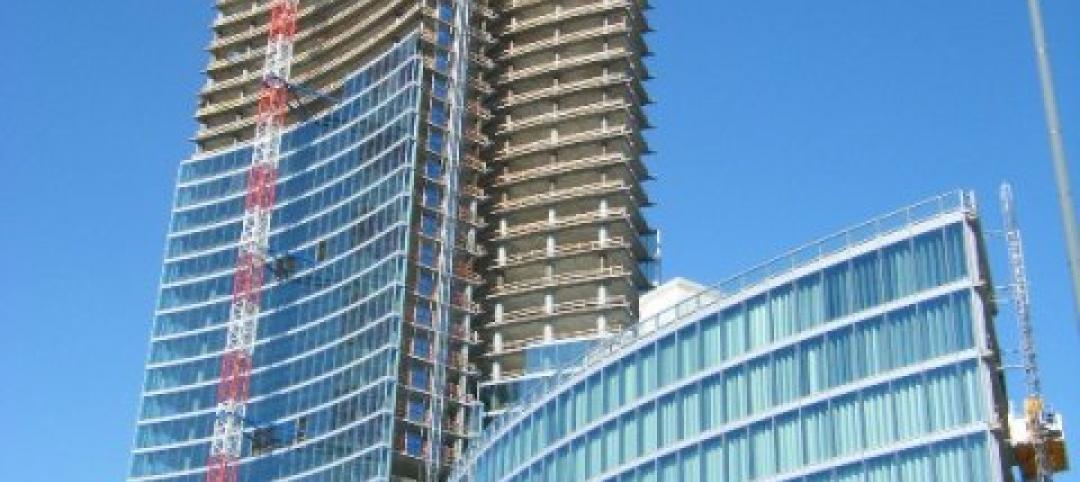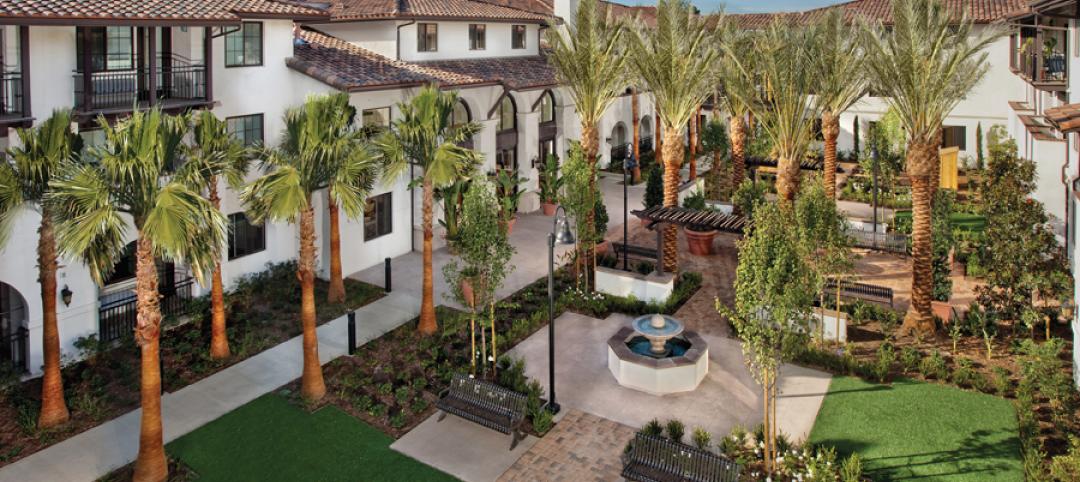The Cuyahoga County Soldiers’ and Sailors’ Monument was dedicated on the Fourth of July, 1894, to honor the memory of the more than 9,000 Cuyahoga County veterans of the Civil War. The small but impressive structure, with a 125-foot column topped by a statue named “Goddess of Freedom,” holds a place of prominence in Cleveland’s Public Square.
In August 2006, the Cuyahoga County Commissioners called for a modest renovation, cleaning, and relighting of the monument, under the supervision of county architect Berj A. Shakarian, AIA, CSI. The $1 million cost was to be raised by a nonprofit foundation, the Soldiers’ and Sailors’ Monument Support Group.
Extensive research by the Cleveland design firm Westlake Reed Leskosky (with Peter van Dijk, FAIA) determined that more extensive work was required than originally anticipated. The roof needed re-caulking. The marble tablets were bent out of shape and discolored. The stained-glass windows needed restoration. In all, the cost would double. Undeterred, the support group raised nearly $2 million from state and county funds and contributions from foundations, businesses, veterans’ groups, and private individuals.
The work began in late 2008. Perhaps the most unusual technical problem had to do with the commemorative tablets. The 4x7-foot slabs, about an inch thick, each weighing 350 pounds, had to be cleaned so that the marble veining could show through the original yellow tint. The traditional technique, mud-based poultice, was ruled out. Research determined that a latex-based cleaning product, if applied and allowed to dry for 13-15 hours, would form a film that could be peeled off. Though tedious, the technique cut the usual cleaning time from three months to three weeks.
Many of the many of the marble slabs were bent out of shape, and the Building Team considered using a method developed by Lord Raleigh in the 1920s—soak the slabs in hot water and bend them back under pressure—but the National Park Service nixed the idea. Instead, to at least stabilize the slabs, the team installed a fin-tube heating system, dehumidifiers, and air-conditioning to control the humidity that was deemed to be the likely cause of the distortion problem.
Detailed research into the marble decoration revealed that the monument had three levels of coloration: tinting (to allow the veining to show through); marbleizing (where veining is augmented or added); and ornamentation (where both tinting and marbleizing are used along with non-opaque colors).
Balancing their research findings, the demands of historical accuracy, and aesthetic interpretation, the team developed a palette of eight colors to restore the original polychromatic interior marbles to their original brilliance. Careful attention was paid to sealing the finishes.
Fourteen Tiffany-style stained-glass windows—two above the entry doors depicting sunrise and sunset, the other 12 portraying military regalia and imagery—were found to be bulging or missing glass. Team members traveled to Chicago to find perfect matches for the missing glass, and the windows were disassembled, repaired, cleaned, and reinstalled.
To enhance the visitor experience, new fluorescent, track, and LED lighting was carefully balanced to enhance the freshly tinted and re-inked lettering of the marble tablets and highlight various accent items.
The final touch had to do with a bronze relief of President Lincoln. Photographic research showed that, as late as 1932, Lincoln was holding the shackles of a freed slave in his right hand, but the shackles had gone missing for more than 40 years. The Building Team restored the shackles in time for the grand reopening last June.
“The research was the most difficult part,” said jurist Tom Brooks, VP, Restoration Division, Berglund Construction, Chicago. Added judge Darlene Ebel, Director, Facilities Information Management, University of Illinois at Chicago, “Restraint was used. It takes a lot of judgment to decide what level of restoration to do. What they did was absolutely right.”
“This is an inspiring project,” said George Karl Tuhowski, III, LEED AP, general superintendent, Leopardo Construction, Hoffman Estates, Ill. “No stone was left unturned.” BD+C
PROJECT SUMMARY
Building Team
Submitting firm: Soldiers’ and Sailors’ Monument Support Group
Owner: Cuyahoga County Soldiers’ and Sailors’ Monument Commission
Architect/Interior design/MEP engineer/Historic specialist: Westlake Reed Leskosky with Peter van Dijk, FAIA
GC: EnviroCom Construction, Inc.
General Information
Size: 1,600 gsf with 125-foot column and statue
Construction cost: $2.0 million
Construction period: May 2009 to May 2010
Delivery method: Design-bid-build
Related Stories
| Jan 10, 2013
Guide predicts strongest, weakest AEC markets for 2013
2013 Guide to U.S. AEC markets touts apartments, natural gas, senior housing and transmission and distribution.
| Jan 9, 2013
Panasonic and Bluebeam preview new architect app at CES 2013
Panasonic and Bluebeam Software collaborate to develop and introduce the 4K tablet and software to the design and construction industry.
| Jan 3, 2013
Answered prayers
A bold renovation enables a small church to expand its mission on a grand scale.
| Jan 3, 2013
Top BIM/VDC articles of 2011-2012
A compendium of BD+Cs top building information modeling and virtual design + construction articles from 2011-12.
| Jan 3, 2013
8 trends shaping today’s senior housing
The ranks of those age 65 and older are swelling by the thousands every day. Is there an opportunity for your firm in the seniors housing market?
| Jan 2, 2013
Trends Report: New facilities enhance the quality of campus life
Colleges and universities are building state-of-the-art student unions, dining halls, and other non-academic buildings to enrich the campus experience, boost enrollment, and stay competitive.
| Jan 2, 2013
M&A activity at U.S. AEC firms up slightly
Total mergers and acquisitions in the AEC industry hit 171 in 2012, up slight from the 169 deals in 2011.
| Jan 2, 2013
Global data center market to ‘slow’ to 14.3% this year
Total global investment in data centers is expected to slow down somewhat this year but still increase at a respectable 14.3%, according to DCD Intelligence.
| Jan 2, 2013
Construction jobs made gains in 2012, even with a slow Q4, says Gilbane report
The construction sector in the nine states with 50% of construction employment was up 169,000 jobs from February to September 2012, following a lost of 137,000 jobs from September 2011 to January 2012.
















